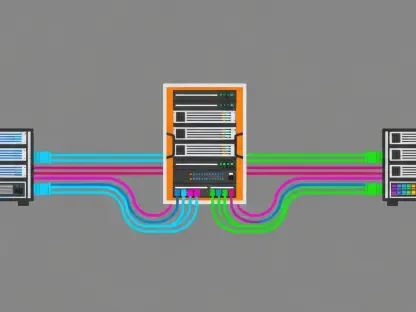The landscape of artificial intelligence (AI) is rapidly evolving, with new paradigms emerging to enhance reasoning capabilities and efficiency. One of the most promising approaches is reasoning in latent mathematical spaces rather than conventional language-based processing. This article delves into the transformative potential of latent space reasoning in AI, its challenges, and groundbreaking models like Coconut and Tom Goldstein’s recurrent model.
The Evolution of Human Thought and AI Processing
Human Cognition vs. AI
Human cognition often transcends the necessity of language, with many thoughts not requiring grammatical structures or explicit verbalization. Neuroscientific research suggests that much of human reasoning occurs beyond the confines of spoken or written language, relying instead on abstract mental representations. These non-linguistic forms of cognition can facilitate faster and more efficient problem-solving. Conversely, traditional AI approaches have heavily depended on processing language-based inputs and outputs, which can hinder creativity and speed.
AI systems typically translate human input into machine-understandable tokens and then manipulate these tokens to generate responses. This token-based methodology involves significant computational effort and resource consumption, introducing potential inefficiencies. Recent shifts focus on leveraging latent spaces, numerical realms where AI models can operate more fluidly, emulating the brain’s natural processing. This approach offers the possibility of accelerating AI reasoning by reducing reliance on explicit language conversion.
Latent Space: The New Frontier
Large language models (LLMs) like GPT-3 and its successors represent information in multi-dimensional mathematical spaces called latent spaces. These spaces are sophisticated numerical environments where models perform complex calculations. The ability to process and manipulate data within latent spaces can greatly enhance AI’s efficiency and reasoning capabilities. Unlike word-based systems, latent spaces avoid the need for constant translation between words and mathematical representations, potentially streamlining operations and reducing information loss.
Latent spaces encapsulate a model’s understanding of concepts, relationships, and patterns in numerical form, which can be more flexible and detailed than word-based representations. This flexibility allows for more nuanced analysis and synthesis of information, paving the way for more advanced and efficient AI reasoning. By focusing operations within these latent spaces, AI models can maintain a higher degree of precision and adaptability, ultimately driving innovation in the field.
The Constraints of Current Language Models
Word Dependency and Inefficiency
Current AI language models face significant challenges due to their dependence on converting latent mathematical representations into explicit words. This transition demands extensive computational resources and can result in substantial information degradation. The process of transforming a model’s understanding from latent representations to word tokens involves multiple stages of tokenization, embedding, and decoding, each introducing potential inefficiencies and errors. These inefficiencies are particularly pronounced in tasks requiring rapid and complex reasoning, where the lag introduced by language conversion can impede performance.
Furthermore, AI models reliant on word tokens might struggle to capture the full spectrum of nuanced meanings inherent in human thought. The discrete and linear nature of words can limit the model’s ability to represent multifaceted ideas and intricate relationships accurately. By operating purely within latent spaces, models can circumvent the constraints imposed by word-based systems, enhancing both speed and precision in reasoning tasks. This shift could unlock new capabilities, enabling AI to tackle more complex problems with greater efficiency and effectiveness.
The Problem with Tokenization
Tokenization is a fundamental process in modern language models, involving the conversion of text into smaller pieces called tokens. These tokens can be whole words, fragments, or characters, which are then transformed into numerical embeddings that neural network layers process. While tokenization is crucial for AI to understand and generate language, it can also be a bottleneck for efficiency and effectiveness. The fragmentation of text into tokens necessitates additional computational steps to reassemble and interpret these pieces, potentially slowing down the overall processing speed.
Moreover, tokenization introduces challenges in maintaining the integrity of the original meaning and context of the input text. The process can result in loss of subtleties and nuances, critical for accurate reasoning and decision-making. Latent space reasoning offers an alternative by allowing models to operate continuously within numerical representations, bypassing the need for tokenization. This method can preserve the richness of information and streamline computational operations, facilitating quicker and more accurate responses to complex queries.
Breaking New Ground with Latent Space Reasoning
The Coconut Model
Shibo Hao and his team have pushed the boundaries of AI reasoning by modifying the GPT-2 architecture to develop a new model known as Coconut. This innovative approach loops hidden states directly back to input embeddings, enabling the model to perform more operations within latent space before producing text outputs. By minimizing transitions between latent mathematical representations and word tokens, Coconut enhances processing efficiency and maintains higher accuracy in reasoning tasks.
The Coconut model’s design leverages latent spaces to maintain a continuous flow of information without frequent conversions, reducing computational overhead. This approach has demonstrated significant improvements in tasks requiring logical reasoning and complex decision-making. However, while Coconut exemplifies the potential of latent space reasoning, it also faces challenges in elementary mathematical operations due to constraints in training and the fixed looping mechanism. Addressing these limitations involves refining the model’s architecture and expanding training datasets to encompass a broader range of tasks.
Performance and Limitations
Coconut has shown impressive results in efficiency and accuracy compared to traditional models dependent on explicit tokens. By operating largely within latent spaces, Coconut can perform reasoning tasks more swiftly, reducing lag and increasing computational speed. This improvement is particularly evident in scenarios requiring logical reasoning, pattern recognition, and decision-making. However, Coconut’s performance in elementary math tasks has been hindered by the constraints of its initial training and the looping mechanism used to maintain continuous latent space operations.
These limitations highlight the need for ongoing research to optimize Coconut’s architecture and training processes. Enhancing the model’s ability to handle a wider range of tasks, including elementary mathematics, involves expanding datasets and refining the looping mechanism to allow more flexible and adaptive computations. By overcoming these challenges, Coconut and similar models could achieve unprecedented levels of efficiency and accuracy, paving the way for more robust and versatile AI systems.
Innovations by Goldstein’s Team
Dynamic Layer Utilization
Tom Goldstein’s team has introduced an innovative recurrent transformer model that employs a flexible number of layers, enabling dynamic resource allocation based on task complexity. This model adjusts its computational depth according to the intricacy of the task, allowing simpler tasks to be processed with fewer layers while more complex tasks engage additional layers. This dynamic approach enhances the model’s efficiency by optimizing resource usage and enabling more adaptive behaviors.
The recurrent transformer model leverages latent spaces to perform most of its reasoning, maintaining continuity and reducing the need for frequent transitions between numerical and word-based representations. By dynamically adjusting the number of layers, the model can allocate computational resources more effectively, ensuring optimal performance for varying task demands. This flexibility allows the model to exhibit emergent behaviors, adapting its processing depth in real-time to align with task complexity, ultimately enhancing efficiency and accuracy.
Enhanced Efficiency
Goldstein’s dynamic layer utilization model has demonstrated substantial efficiency gains in reasoning tasks, highlighting its ability to adapt resource allocation based on task demands. This mechanism enables the model to maintain most of its operations within latent spaces, reducing the need for constant conversion between numerical and word-based representations. As a result, the model can perform complex reasoning tasks more rapidly, with fewer computational overheads, while maintaining high accuracy in decision-making.
The dynamic adaptability of the model reflects an emergent behavior where computational depth adjusts naturally according to task complexity. This flexibility ensures efficient use of resources, enhancing the model’s overall performance. By continuously operating within latent spaces, the model can preserve the richness of information and deliver more precise responses. The ability to dynamically allocate layers and optimize calculations based on task demands represents a significant leap forward in AI reasoning capabilities, setting a new benchmark for efficiency and effectiveness.
Navigating the Pros and Cons
Advancements and Promising Results
Both the Coconut model and Goldstein’s recurrent transformer model illustrate the transformative potential of latent space reasoning, showcasing notable improvements in computational efficiency and accuracy. These models represent significant advancements in AI, highlighting the benefits of bypassing traditional language-based processing. By operating continuously within latent spaces, these models can handle complex reasoning tasks with greater speed and precision, opening new horizons for AI applications.
The promising results from these models underscore the potential for enhanced AI systems capable of more efficient and accurate decision-making. Coconut’s ability to loop hidden states back to input embeddings and Goldstein’s dynamic layer utilization approach exemplify innovative strategies that leverage latent spaces effectively. These advancements pave the way for AI systems to perform reasoning tasks more swiftly and accurately, driving innovation and setting new standards in the field.
Addressing Limitations
Despite their promise, these models face significant challenges that need to be addressed to ensure compatibility with human-like reasoning processes. Traditional language-based reasoning is inherently aligned with human cognition, and purely numerical representations may struggle to capture the nuances and context of human thought. Ensuring these models can seamlessly integrate and interpret human-like reasoning patterns is crucial for practical usability and effectiveness.
Additionally, the need for extensive computational resources and advanced training processes presents substantial hurdles. Coconut’s limitations in elementary math tasks reflect the constraints of its initial training and architectural design. Overcoming these challenges involves refining model architectures, expanding training datasets, and ensuring the models can adapt flexibly to diverse reasoning demands. By addressing these limitations, latent space reasoning models can achieve more robust and versatile AI systems, capable of performing complex tasks with human-like precision and understanding.
Paving the Way for Future Research
Continuing Exploration
The strides made by Coconut and Goldstein’s recurrent transformer model indicate a promising direction for future AI research. These models exemplify innovative approaches to latent space reasoning, showcasing the potential for enhanced efficiency and accuracy. Continuing exploration in this field involves refining model architectures, expanding training datasets, and developing advanced methods for optimizing latent space operations. By delving deeper into latent space reasoning, researchers can unlock new capabilities, driving AI innovation and paving the way for more adaptable and efficient systems.
Future research efforts should focus on improving the flexibility and adaptability of latent space reasoning models. Enhancing architectures to allow more dynamic computations, expanding training datasets to encompass diverse tasks, and optimizing algorithms for fine-tuned latency and precision are critical areas of exploration. By continuing to push boundaries and refine these innovative models, AI systems can achieve unprecedented levels of efficiency and accuracy, transforming the field and opening new avenues for applications.
Overcoming Training Constraints
The landscape of artificial intelligence (AI) is rapidly evolving, introducing new paradigms aimed at enhancing reasoning capabilities and efficiency. A particularly promising approach centers on reasoning within latent mathematical spaces, diverging from traditional language-based processing methods. This shift marks a significant transformation in the way AI operates, potentially offering more nuanced and sophisticated reasoning abilities.
Latent space reasoning involves mapping information into a high-dimensional mathematical space, which allows for complex relationships and patterns to be more effectively managed and interpreted. This method contrasts with conventional AI systems that rely heavily on language-based data processing, which can sometimes limit their ability to understand and generate responses that reflect deeper reasoning.
The concept is not without its challenges. One major hurdle is the need for robust models that can accurately navigate and utilize these latent spaces. To address these, researchers have developed groundbreaking models like Coconut and Tom Goldstein’s recurrent model. These models aim to refine the process of mapping and reasoning within these abstract spaces, improving AI’s overall effectiveness.
By delving into latent space reasoning, AI systems can potentially achieve higher levels of comprehension and decision-making accuracy, heralding a new era in artificial intelligence innovation. The exploration of these advanced models and approaches highlights the transformative potential waiting to be unlocked, signifying a major leap forward for AI technology.









